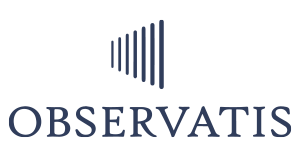Burnout isn’t a personal failure—it’s an organizational blind spot.
It’s time to reimagine reviews as holistic tools for growth, resilience, and retention.
Traditional performance reviews often miss the emotional context of an employee’s contributions. You get the output, but not the story behind it. In today’s workforce, performance doesn’t exist in a vacuum—it’s tightly interwoven with wellbeing, burnout risk, and psychological safety.
At Observatis, we’ve fused adaptive performance management with real-time wellbeing intelligence. Because people don’t just want to be rated—they want to be recognized, coached, and supported.
Feedback without care is just criticism.
✔ 60% of employees report that annual reviews are stressful and unhelpful.
✔ Only 29% of HR leaders believe their current performance management system supports employee growth.
✔ Burnout is now cited as the #1 driver of turnover in high-performing employees.
Let’s have a conversation
Observatis combines 360° feedback workflows with wellbeing diagnostics, enabling a more holistic, real-time understanding of employee contributions and capacity. Our ML models detect early patterns of burnout and misalignment before they impact productivity or morale.
✅ Adaptive Performance Reviews
✅ Manager + Peer + Self Feedback loops
✅ Embedded Wellbeing Index
✅ Burnout Risk Triggers
✅ Real-time alerts for intervention
Whether it’s an annual review or an ad-hoc check-in, Observatis layers in wellness indicators so leaders can coach with context.
Why It Matters?
If you wait until the performance dips to intervene, you’ve already lost momentum. When wellbeing is visible and supported, high performers stay engaged—and teams become resilient.
Organizations that integrate wellness into performance practices see:
🔹 21% higher profitability
🔹 41% lower absenteeism
🔹 59% less turnover among high performers


Emerging Scientific Insights
📌 A recent study in Harvard Business Review revealed that companies embedding emotional wellbeing markers into performance feedback improved leadership effectiveness by 34%.
📌 The National Institute for Occupational Safety and Health emphasized that burnout detection in performance tracking reduced clinical turnover by 23%.
📌 Research from Yale Center for Emotional Intelligence showed that emotionally aware performance reviews enhance trust and psychological safety across teams.
Pioneers Lighting the path
Mayo Clinic recently integrated wellbeing scores into clinical evaluations, reducing nurse attrition by 18%.
Adobe’s “Check-In” system includes emotional pulse questions—leading to 30% higher manager satisfaction ratings.
Cisco rolled out a burnout flag into performance dashboards during their hybrid transition—resulting in faster internal mobility and reduced attrition.
Your action blueprint
– Harvard Business Review: “Why Burnout Belongs in Your Performance Reviews”
– NIOSH Study on Healthcare Turnover & Stress
– Yale Center for Emotional Intelligence: Performance and Wellbeing Research
– Gallup Workplace Reports, 2023
– SHRM Talent Trends Reports
– Deloitte Human Capital Insights, 2024
What if your performance reviews also tracked wellbeing?
We help leaders balance accountability with care—blending performance and burnout signals into one narrative.
If you want to move beyond static forms and into adaptive feedback systems, let’s chat.
References & Credits
– Harvard Business Review: “Why Burnout Belongs in Your Performance Reviews”
– NIOSH Study on Healthcare Turnover & Stress
– Yale Center for Emotional Intelligence: Performance and Wellbeing Research
– Gallup Workplace Reports, 2023
– SHRM Talent Trends Reports
– Observatis ML Models & Data Frameworks (2024), internal IP documentation.
– Deloitte Human Capital Insights, 2024





Anonymous
Our performance reviews feel outdated. Adding a wellbeing lens could be the culture shift we need.
Anonymous
Is there a way to quantify burnout risk in real time? This sounds promising.
Anonymous
We’ve seen top performers burn out quietly. I’d love to explore how Observatis surfaces those early warning signs.
Anonymous
How does Observatis integrate wellbeing data—through surveys, sentiment, behavior?
Anonymous
This reminds me of when we tried to add ‘wellness check-ins’ to reviews—it never scaled. Maybe automation can help.
Anonymous
360 shouldn’t be once a year. Making it continuous and holistic is long overdue.